A Reflection on Our Mortal Journey
We all have lost someone or going to loose someone someday. This is a universal truth we all face. “Why do we fear death?” This provocative question sets the stage for for a deep dive into the multifaceted experiences of loss and the profound lessons they offer about life, death, and the human condition.
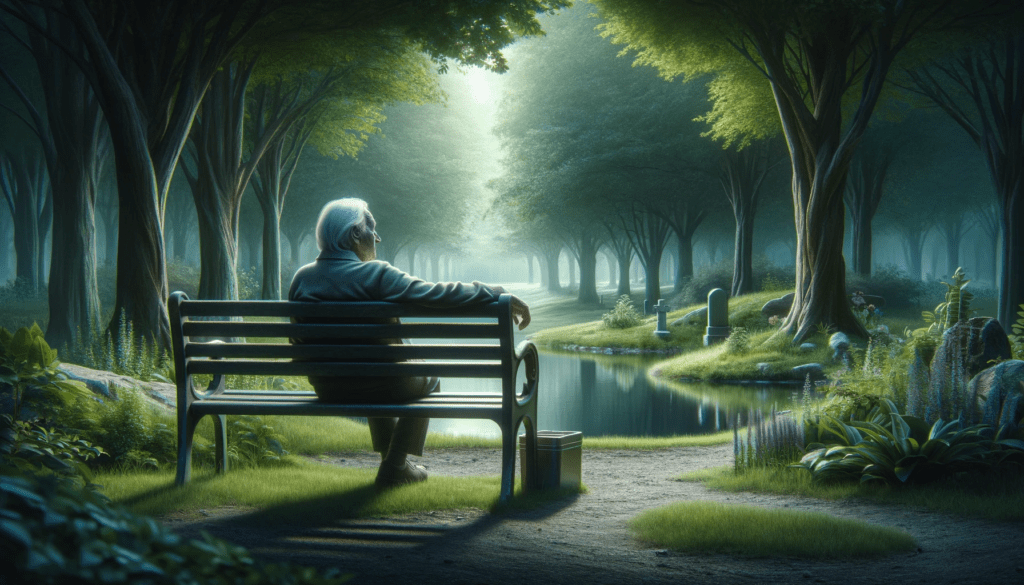
A poignant scene depicting an elderly person sitting alone on a park bench, gazing thoughtfully into the distance
“Can wisdom be found in mortality?” Let’s try to understand this with my story:
October 15, 2020, started as just another day in my Bangalore home, but it transformed into one of the most pivotal moments of my life. The phone rang, shattering the calm of my morning routine. It was my elder brother, his voice tense and urgent: “Dad is on life support; take the next flight to Kolkata.” His words struck me like a bolt of lightning.
Just the night before, I had a video call with Dad. He mentioned feeling very weak, but I, in my usual manner, reassured him, “You worry too much, Dad. We’ll get you discharged tomorrow or the day after.” Little did I know, that would be our last conversation.
By the time my plane touched down in Kolkata, my world had shifted irreversibly. Dad had passed away. I had witnessed the passing of my grandparents before, but this was different. This was a shock to my system, a loss so profound that it left me numb.
The last rituals were a blur. I stood there, amidst the chanting and the solemn faces, feeling too numb to even cry. It was as if my body had forgotten how to express the immense grief that was swelling inside.
In the days and months that followed, I found myself living the textbook stages of grief, feeling each one with a raw intensity.
Denial was my first companion in this journey. For the first 2-3 days, my mind refused to accept the reality. It felt like a cruel joke, a nightmare that I would soon wake up from.
Then came Anger. It stayed with me for about 30 days, a raging storm inside me. I was angry at the world, at fate, at the unfairness of it all. I questioned everything – the doctors, the universe, even Dad himself for leaving us so suddenly.
Bargaining followed, a stage filled with ‘what ifs’ and ‘if onlys’. I replayed every conversation, every decision, wondering if there was something I could have done differently, something that would have changed the outcome.
Depression was the longest and the hardest phase. It engulfed me for nearly a year. It was more than sadness; it was a deep void, an overwhelming sense of loss that made everyday life seem meaningless.
And now, I find myself in the stage of Acceptance. Though It’s still a sad acceptance, not a peaceful one. I’ve come to terms with the fact that Dad is gone, but the void he left behind still aches. I carry the memories, the lessons, and the love he gave me, but I also carry the sorrow of his absence.
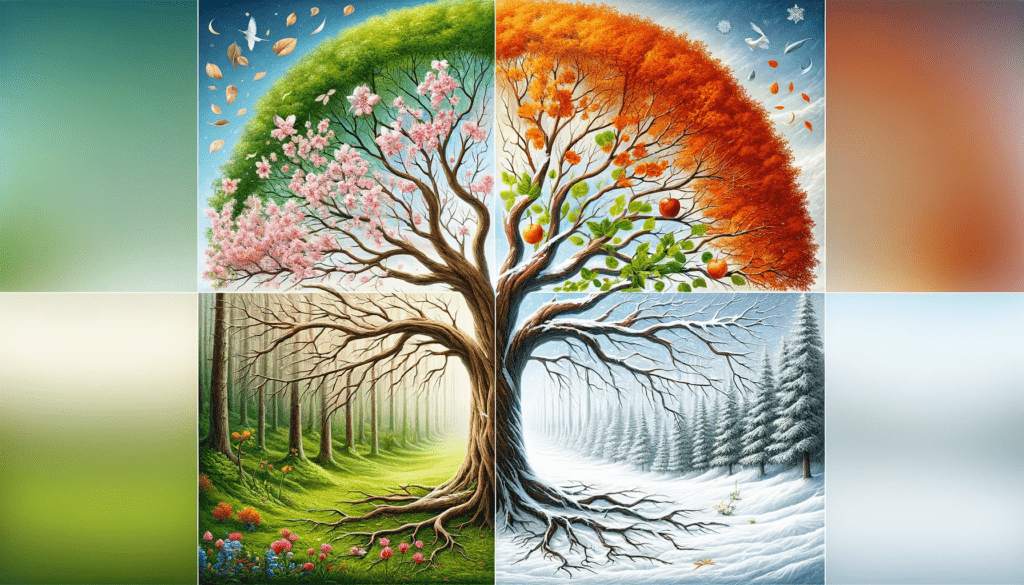
The cycle of life and death through the depiction of a tree in different seasons
It’s a story of loss and In the midst of navigating the difficult journey of grief during the depression phase I came across Elisabeth Kübler-Ross’s “On Death and Dying” as a source of understanding and solace. I realised my personal odyssey mirrors the bitter truths laid bare in Ross’s book.” My journey through grief, with its raw and turbulent emotions, reflects the stages Ross describes, offering a real-life testament to her ground breaking work. Her insights into the emotional and psychological trials of those facing loss are not just academic concepts; they are lived experiences for many, including myself. In navigating this difficult path, I’ve learned, much like Ross suggests, about the fragility of life, the complexity of human emotions, and the importance of empathy and understanding in the face of death.

This book is not only about dying but also about dealing with a major loss
“On Death and Dying” was published in 1969, is based on her extensive research, interviews and interactions with terminally ill patients and their families. It challenges societal norms and attitudes towards death, advocating for a more compassionate and humanistic approach to loss.
In the modern context, this book is not only about dying but also about dealing with a major loss. As the human species, we are destined to encounter losses throughout our lives, , but no school teaches us how to handle these profound experiences. Whether they be the loss of loved ones, the loss of relationships, or the loss of certain aspects of our own health and vitality.
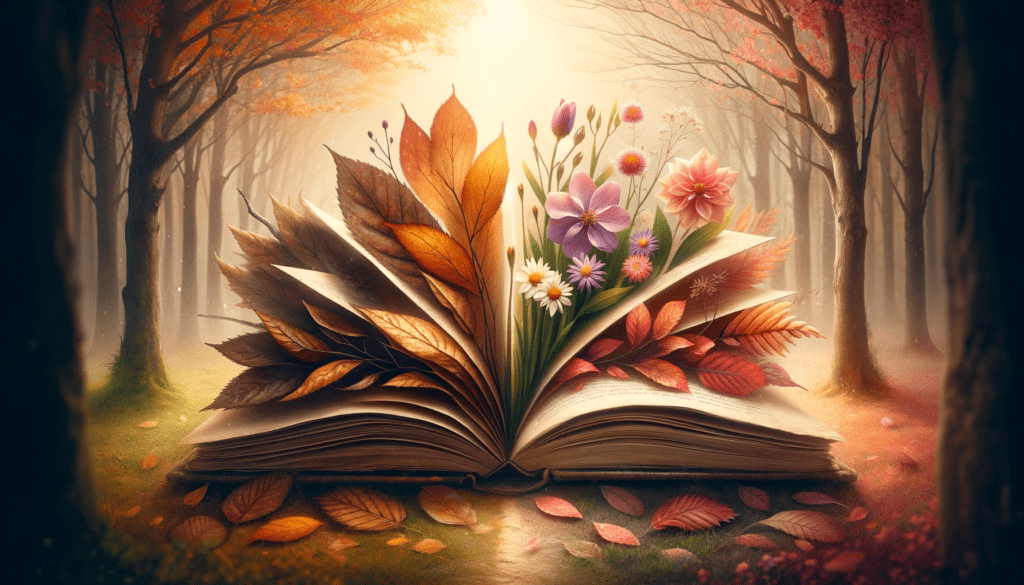
Themes of LOSS & RENEWAL, as depicted in an open book transitioning from Autumn Leaves to Spring Flowers
Kübler-Ross introduces the famous five stages of grief, a framework for understanding how individuals confront their mortality. These stages, while not linear, offer insights into the emotional and psychological challenges faced by those grappling with loss.
The Five Stages of Grief
1. Denial is the initial stage of grief, characterized by shock or disbelief regarding the loss. It’s a defense mechanism that buffers the immediate shock, providing a temporary respite from the pain. For example: A patient diagnosed with a terminal illness might insist there’s been a mistake or cling to the hope that test results are incorrect.
She writes “When his initial feeling of numbness begins to disappear and he can collect himself again, man’s usual response is ‘No, it cannot be me.’ Since in our unconscious mind we are all immortal, it is almost inconceivable for us to acknowledge that we too have to face death.”

A symbolic representation of death standing next to the ostrich scene
Complexity of this denial is, it’s not absolute but rather a fluctuating state. We may acknowledge their illness at times, only to revert to denial when the reality becomes overwhelming.
Understanding denial helps recognize and being aware that it’s a normal part of the grieving process. It allows us to understand why a person might initially appear unaffected by their diagnosis or the loss of a loved one.
2. Anger: As the denial fades, the reality and pain of the situation emerge. When we start to acknowledge the situation, we often shift to feelings of frustration and anger. This anger can manifest in various ways, including envy and resentment towards those not facing a similar situation.
Recognizing this anger as a stage of grief is a necessary step in the healing process, allowing emotions to be processed.
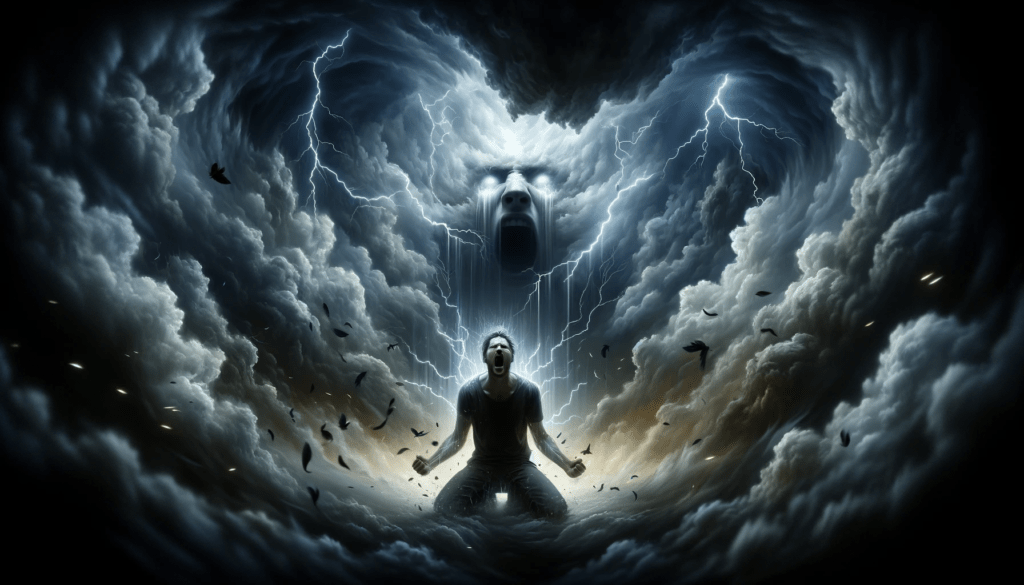
A person in the centre of a metaphorical storm, with dark clouds and lightning bolts surrounding them, symbolizing the intense and chaotic nature of anger during the grief process
3. Bargaining: This stage is when we try to negotiate or make deals, often with a higher power, in hopes to reverse or lessen the loss. For example: A person might promise to change their lifestyle or devote themselves to a cause if only their loved one’s life is spared.
This stage reflects our struggle to find meaning and regain control. Understanding it can aid us in providing support without judgment.
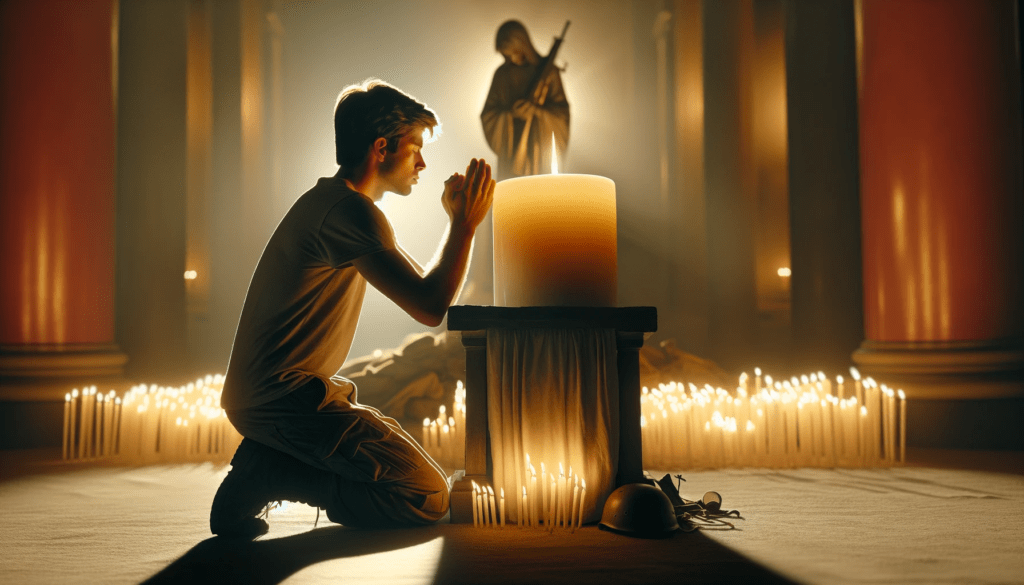
A poignant image capturing the emotion of someone devoting themselves to a cause in exchange for their loved one’s life being spared
4. Depression: This stage involves a deep sense of sorrow and loss. We may become quiet, withdraw from life, and spend much time in reflective sadness, recognizing the magnitude of our loss. For example: A grieving person may show disinterest in activities he or she once enjoyed, expressing profound sadness or hopelessness.
Understanding depression in grief helps in recognizing it as a natural and appropriate response, not a sign of weakness. It necessitates support and empathy rather than dismissal or haste to “move on.”

A contemplative scene showing a person sitting alone in a dimly lit room, staring blankly into space, embodying the stage of denial in grief
5. Acceptance is not necessarily a stage of happiness or resolution but rather a period of coming to terms with the new reality. It involves acknowledging the loss and learning to live with it. For example: in this stage we might start talking more openly about loss, engage in activities again, or plan for the future, acknowledging our loss as a part of our life story.
This stage is crucial for emotional healing, allowing us to make adjustments and find ways to continue our lives meaningfully. This important understanding is needed to support the grieving person through this emotionally challenging phase of acceptance.

An imaginative depiction of a person standing under a large tree, surrounded by a myriad of colors and light
Applying these principles in daily life:
- Handling Grief: Knowing that grief is a natural and normal process that most people go through can help individuals feel less alone and isolated in their grief.

An image depicting the concept of handling grief, showing a person surrounded by natural elements that symbolize the process of grief
2. Identifying and acknowledging emotions: Recognizing the stages of grief can help us understand and acknowledge the emotions they are experiencing, which can help us process our feelings and work through our grief in a healthy way.

An image depicting a person standing before a spectrum or range of colours, each representing a different stage of grief and its associated emotions
3. Coping with other losses: The stages of grief can be applied to any type of loss, not just the death of a loved one. Understanding the stages of grief can help individuals cope with any types of losses also, such as a job loss or the end of a relationship.
4. These encourage us to confront our own fears and anxieties about mortality & loss. This allows us to live more meaningfully and cherish each moment, promoting deeper and more meaningful relationships.

An image of a person stepping out from a dark, shadowy area into a bright, illuminated space
Key Quotes from the Book:
- “Let me not pray to be sheltered from dangers but to be fearless in facing them. Let me not beg for the stilling of my pain but for the heart to conquer it. Let me not look for allies in life’s battlefield but to my own strength. Let me not crave in anxious fear to be saved but hope for the patience to win my freedom. Grant me that I may not be a coward feeling your mercy in my success alone; but let me find the grasp of your hand in my failure.” – Rabindranath Tagore.
- The most beautiful people we have known are those who have known defeat, known suffering, known struggle, known loss, and have found their way out of those depths.

A majestic phoenix rising from ashes against a dramatic sky, symbolizing rebirth and triumph over adversity
3. In our unconscious mind, we cannot distinguish between a wish and a deed.
4. Since in our unconscious mind we are all immortal, it is almost inconceivable for us to acknowledge that we too have to face death.

A striking image of a tree that is split down the middle, representing the contrast between life and decay
5. We can do this(healing others) only when we have faced our own fears of death.
6. Guilt is perhaps the most painful companion of death (loss).
7. Dying is something we human beings do continuously, not just at the end of our physical lives on this earth.
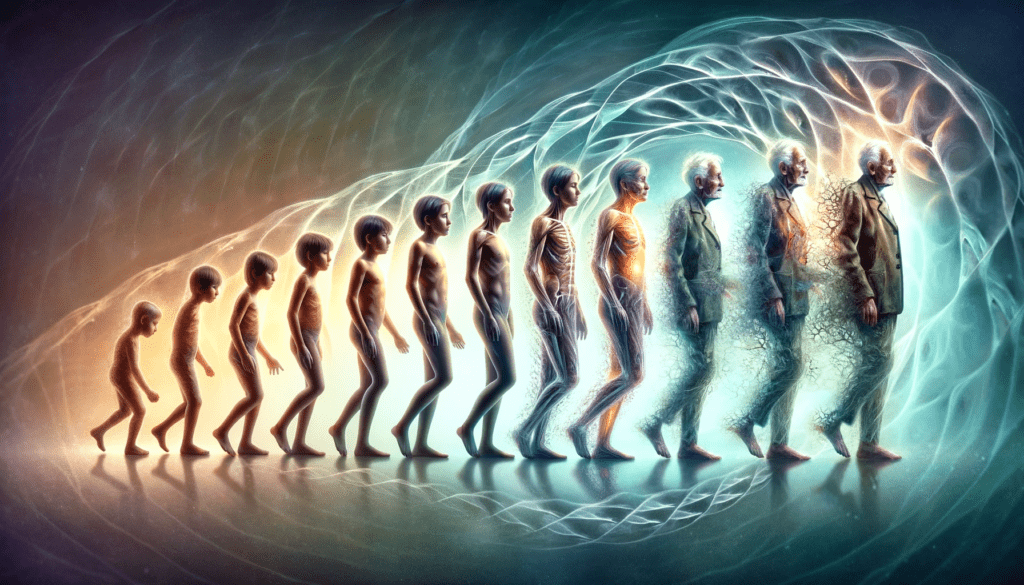
An image depicting the metamorphosis of a person over time, shown in a sequence of interconnected images
Final words:
The struggle to balance hope and reality in the face of loss, whether it’s the loss of a job, wealth, or something more personal, is a universal challenge. This delicate balancing act is not just about managing our own expectations and emotions, but also about how we communicate and interact with those around us.
The book give us an understanding of the deep psychological reasons behind our responses to loss and provides a solid framework to manage our expectations and emotions. It also reminds us of the profound importance of honest and compassionate communication.
This understanding and approach, not only assist us in times of personal grief or loss but also equip us to offer meaningful support to others in their moments of need, fostering a more empathetic and connected community.

An image of people holding hands in a circle, with one person in the center being comforted, representing the community offering support and empathy
